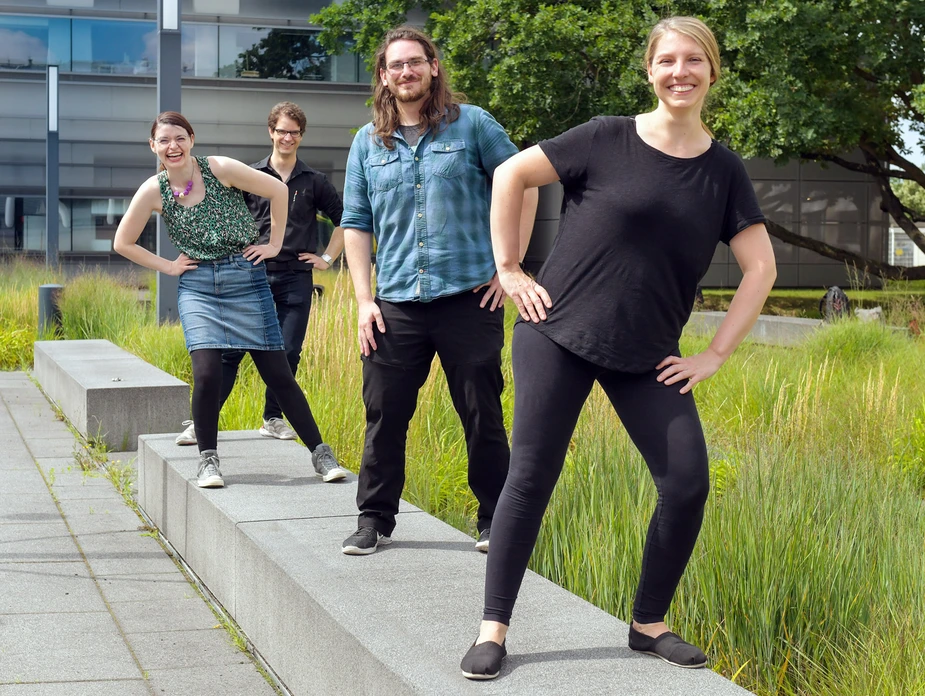Webinars replacing face-to-face events
BAM gets creative in the wake of the coronavirus crisis
Need is the mother of invention. The solution is often right in front of us. When the pandemic threw planning into disarray, the team of the Federal Institute for Materials Research and Testing (BAM) got pretty creative even without the additional motivation of such proverbial sayings. ‘In March, most conferences and workshops were cancelled overnight,’ says Jenni Haberland from BAM’s communications department. Regulation on hygiene and social distancing did not allow for more than a few participants. Cancellation also loomed over a series of talks for young materials researchers. Topics included techniques to analyse scattering and diffraction of light with, for example, synchrotron or X-rays.
Holding the talks online seemed like the most feasible solution. And so, a team of four started to get to work. Their motto was ‘learning by doing’, as Brian Pauw puts it. The Dutch-born chemist and BAM specialist for small-angle X-ray scattering (SAXS) has had some prior experience with online conferencing via Zoom, but the webinar’s planned international reach turned out to be quite a challenge for him. Glen Smales, a British chemist who has been a researcher at BAM for two years, had a similar experience.
Clair Murray, on the other hand, a six-month guest researcher who had been based at BAM until August 2020, was well-acquainted with giving presentations online. Murray is an expert at the Diamond Light Source, the UK’s national synchrotron in Oxfordshire, England. Internal and external webinars are everyday business at diamond and so the BAM team sought to cooperate in this area. Incidentally, the BAM webinar series ‘TheLightStuff’ kicked off with a presentation of Christine Beavers, a Diamond Light Source speaker, about ‘Squeezin’ crystals for fun and science’.
Until early August, a total of 19 lectures were available for viewing and listening every week on Fridays via Zoom. The international range of presenters, which, according to Haberland, went ‘from Australia to Adlershof’, also sought to impress. The webinar certainly helped strengthen the BAM’s international network.
The video events were open to up to 100 participants. Most of them were PhD students and postdocs from different fields of materials research. According to the online reviews, more than 90% of viewers stated that they had benefited from the presentations during the webinar. They were able to hand in written questions that were answered after the lecture.
Those unable to attend can revisit the presentations on YouTube (#TheLightStuff), including that of Helen Brand from ANSTO (Australian Nuclear Science and Technology Organisation). The London-born planetary geologist offered an exciting perspective on Mars. She researches Jarosite crystals, which contain potassium, iron, and sulfate as well as hydroxide ions, using small-angle X-ray scattering and light diffraction. Their existence proves that there was a time when there was water on Mars.
Most people involved with ‘TheLightStuff’ gave a positive review. Brand said that the BAM organisers were ‘Zoom experts’ from whom one could learn a lot. She liked the written questions at the end, because they left the lecture uninterrupted, and she had more time to think about her answers. ‘I was more than happy to be able to speak in front of such a diverse audience,’ says the Melbourne-based researcher in retrospect.
Brian Pauw was glad that so many young researchers took part. ‘It created a network of global contacts that you wouldn’t get from a normal conference. Plus, nobody had to fly, it saved money, and it was environmentally friendly.’
This does not mean face-to-face events are cancelled for good: The participants of the Falling Walls Lab Adlershof will have to be on-site at BAM on Friday, 2 October 2020. (Applications are welcome until 6 September 2020 via falling-walls.com/lab) Young researchers who take part have three minutes to showcase their groundbreaking projects.
By Paul Janositz for Adlershof Journal
